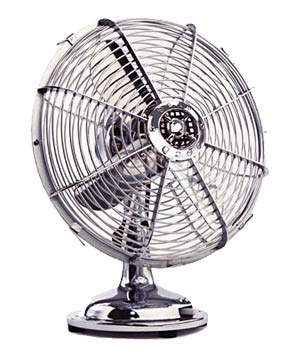Nothin Like an Electirc Fan Brotha
It's getting quite warm outside for January, and I got really hot today so I turned on the fan, thus triggering hours of research and development of different hypotheses on how a fan could possibly relate to Physics and more importantly how I could get a blog post out of it because I believe they are due sometime early this week. :egg) Well first we will begin with the workings of the appliance that I love so much (second only to the microwave). An electric fan consists of an electric motor fitted to a rotor shaft (technical terms) which is then connected to a set of blades, five in my case. Then a current is run through the motor via a battery or mains connection. This will turn the rotor which then spins the blades. The blades are purposely constructed to be aerodynamic to be as efficient and fluid a shape as possible as to cut down on energy costs. They are structured to capture the air, and this movement of air produces the wind effect that is so familiar to us. The speed of the spinning blades which in turn effects the final yield is controlled by the amount of electricity being run. Essentially all of this deals with physics, with the electricity (energy) being routed through the mechanics (matter) of the fan which creates the movement (motion) of the fans blades which produces the wind effect (force). In this case the motion is circular, which deals with equations such as mv^s/r for centripetal acceleration and formulas like 2(pie)r for the circumference of a circle.



0 Comments
Recommended Comments
There are no comments to display.